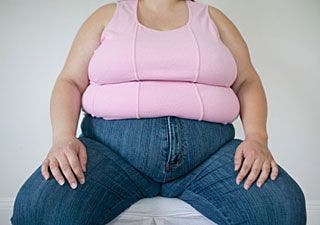The average obese woman gets less than 70 minutes of exercise per year; if you were to average it out, that’s about 11 seconds per day. Obese men don’t have it much better either: they break a sweat only 3.6 hours annually, researchers say.

You can talk about obesity in terms of culture and psychology, in terms of how it slowly crept into our busy lifestyles, but one thing simply can’t be ignored: the biggest enemy of obesity is exercise. But in a new study, researchers showed that obese people tend to exercise less and less, until they reach a the staggering numbers presented above. The findings shocked scientists, who were trying to estimate how much people exercise, and how they can be convinced to do it more.
“They’re living their lives from one chair to another,” said Edward Archer, a research fellow with the Nutrition Obesity Research Center at the University of Alabama at Birmingham. “We didn’t realize we were that sedentary. There are some people who are vigorously active, but it’s offset by the huge number of individuals who are inactive.”
Let’s look at what this means for the US, for example. According to the U.S. Centers for Disease Control and Prevention, 1 in 3 people in the US suffer from obesity. That means that one third of the population, over 100 million people virtually never exercise – and this means that things can only go from bad to worse for them. Still, it should still be noted that the notion of ‘exercise’ is taken pretty strictly here: the researchers themselves acknowledged that the device used to track physical activity did not measure swimming or biking very well. They defined exercise as ‘vigorous activities’, which include jogging, running, swimming, etc – but not sex. According to Archer, sex isn’t as much of a fat-burning activity as certain other kinds of exercise so it doesn’t qualify as vigorous. However, while these numbers may be off by a significant percentage, or even by a factor of 2, they still paint a clear picture.
“The data was there, but no one looked at it and parsed it the way we did,” Archer said. In the big picture, “there is a great deal of variability; some are moving probably a fair amount. But the vast majority [of people] are not moving at all.”
Obesity’s biggest enemy: exercise
In order to reach this conclusion, they used accelerometer devices to track the movements of study subjects providing insight into how much they exercised. They also found out that women of normal weight do an average of 0.03 hours/day (11 hours of vigorous exercise per year), so 10 times more than their obese counterparts, but still pretty low. “Moderate activity” was 0.35 hrs/day for normal weight and 0.23 hrs/day for obese, while “light activity” was 5.99 hours (normal) and 5.86 hours (obese) – not really shocking differences.
However, while I do think that these findings are relevant and important, I can’t really agree with the statistical extrapolation they did. At first, I thought that they monitored the subjects for an entire year, or at least a few months, but all their results were extrapolated from a 4-7 day monitoring period. Personally, I’d like to see the same study conducted over a larger period of time, and perhaps with a less strict definition of ‘exercising’.
Study Reference: Edward Archer et. al, Validation of a Novel Protocol for Calculating Estimated Energy Requirements and Average Daily Physical Activity Ratio for the US Population.


